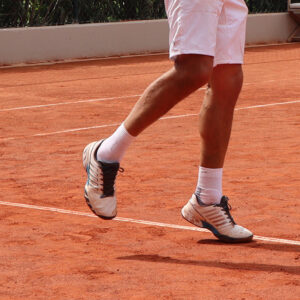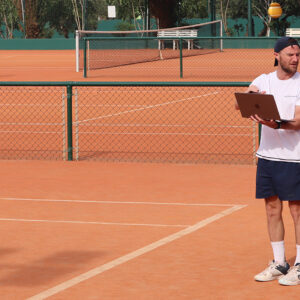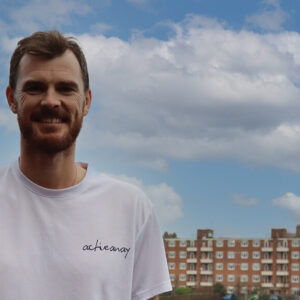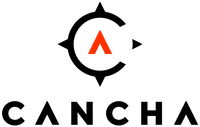Tennis court surfaces are one of the many things that make tennis such a diverse sport. Court surfaces can dramatically change the dynamics of tennis and learning to adapt your play on different surfaces is so important.
Our tennis holidays are delivered at so many different resorts which have different surfaces. Part of our coaching program is to help clients understand how to adapt their game to these surfaces.
Did you know there are over 10 different types of tennis court surfaces? We all know of the 3 main court surfaces as used at the Grand Slam events – Wimbledon Grass, Australian and US Open Hard (Cement) and The French Open Red Clay. Interestingly, not many people have played on all 3 surfaces. With grass courts being in such limited supply many Europeans have never had the chance to play on this surface. This is a question I ask all my clients whilst on their tennis holidays and have discovered that;
A) Many British people have not played on grass.
B) Numerous clients experience red clay for the first time when they come to our Sani Beach Tennis Holiday.
What I’m going to try and do is list all the different surfaces (that I know of) and give my opinion on how they play and their positives / negatives.
Quick Navigation
Real Grass Courts (Wimbledon)
Speed of Play - 8.5/10
Cost to Build - Low
Cost to Maintain - High
My rating - 10/10
A good grass court is simply a joy to play on – Yes, nowadays they may be few and far between due to the time and cost of upkeep.
Characteristics: Generally low bouncing which makes the play fast as there is less time to prepare, a spongey feel underfoot and surprisingly surefooted (if they are dry and you have the correct pimpled footwear). They take to slice very well but topspin not so well as this tends to just allow the ball to sit up.
Positives: The feeling of tradition, good for the joints, great for players that enjoy slicing and have good serves. Also great if you like to volley as there will be many more opportunities to get to the net on grass than on any other surface.
Negatives: Cost of upkeep and also very difficult to keep to a high standard. Not great if there is high usage as the grass wears away with heavy play. Be prepared for bad bounces – yes even at Wimbledon there can be the odd bad bounce. If I was going to build my own tennis court at home, a real grass court would be my No1 choice. Lets face it we only play tennis when the weather is good and how often do we play tennis on our own court? A grass court would be the perfect court to invite friends round for a game of tennis and a BBQ.
Red Clay (French open)
Speed of Play - 3/10
Cost to Build - Medium
Cost to Maintain - High
My rating - 9/10
Many of us Brits have only ever played on Shale courts (which are similar to red clay but made of a coarse red brick so not so flat and produces a few more bad bounces). Red Clay is similar, just smoother, therefore promoting a better bounce. Due to the weather conditions (cold winters) Red clay courts are in limited supply. The lines are normally bedded in plastic or tape and when the ball strikes the line it can change the speed of the bounce which can catch you out.
Negatives: Cost of upkeep and also very difficult to keep to a high standard. Not ideal for the UK weather especially as the cold winters makes the lines pop out when the court freezes. In hot conditions need constantly watering to stop the surface from being too dry and cracking. Not so good if your game is about hitting winners as hitting a winner on clay is a lot more difficult. Don’t expect to be serving so many aces on this surface.
Positives: The feeling of tradition, good for the joints due to being able to slide, great for players that enjoy hitting lots of topspin and having long rallies. Great if you are playing a hard hitter as the surface gives you more time to react.
Characteristics: Very high bouncing which gives more time to play shots, loose surface promoting sliding, they take to both topspin and slice however topspin can be extremely effective on this surface as Rafael Nadal has proved.
Hard Courts (US/Australian Open)
Speed of Play - 5-7/10
Cost to Build - Medium
Cost to Maintain - Low
My rating - 8/10
There are numerous names for Hard courts such as Green Set (slightly slower and at the Australian Open), Plexi Cushion and Deco Turf (slightly faster and at the US open) – basically these are all manufactured brands. They are all acrylic-based hard court tennis surfaces. When the surfaces are laid they add rubber into the mix to give the surface a slightly spongey feel which is a little easier on your joints when playing. The amount of rubber added can affect the height of bounce and also the speed of play. When spraying the paint onto the surface they then add sand into the mix which also affects the speed of the surface as it can make it much more course like sand paper – again this can slow the speed of play down dramatically.
The courts were introduced into the UK back in the 80’s and numerous clubs had them. However, adding the rubber into the mix in my opinion never really made any difference to the softness of the court as in the UK the weather very rarely gets into the 80’s and as you can imagine cold rubber is as hard as cement. So when you play on these courts in the UK very rarely do you notice the spongey feel. In hotter climates the rubber is very noticeable. These courts always need to be laid on a slant to allow for drainage as the surface is not porous.
Positives: Perfect bounce every time allowing you to set strong for your shots. Takes to both slice and topspin. The surface is perfect for all round players as you can do almost anything on a hard court. Bounce is medium to high (this does depend on how the court has been laid and conditions)
Negatives: Cost of build. Have to wait for them to drain when it rains and generally mop up the puddles that have accumulated. Slippery when wet, so not so good in the cold English climate – can feel hard underfoot, harder on the joints as difficult to slide.
Artificial/Synthetic Grass (or Outdoor Carpet)
Speed of Play - 8/10
Cost to Build - Medium
Cost to Maintain - Low
My rating - 7/10
Probably the one surface that almost all brits have played on as it is now the most common surface within the UK. However many have different opinions on this surface and this is mainly due to there being so many different types of synthetic grass which can all play differently due to their different characteristics. Even one of our resorts Liberty Lykia in Turkey where we run tennis holidays has 2 different types of artificial grass surface. The surface was introduced to UK clubs in the 80’s because it was cost effective and promoted a loose sand surface which is good for your joints due to allowing an element of sliding.
The grass can come in many different lengths from 12mm – 30mm obviously the long lengths need more sand as it is laid on top and goes in between the fibers to create the top surface. From my experience I would say that the shorter surfaces always seem to play better, slightly higher bounce and truer, the longer surfaces seem to bounce very low and can have irregular bounces due to being sanded badly when laid.
Positives: Very good bounce every time allowing you to set strong for your shots. Takes to both slice and flat hitting. Lower bounce so the ball stays in your comfort zone more often. Very low maintenance and they last for many years. They are extremely porous so you can play in the rain.
Negatives: They don’t simulate real grass that well due to the bounce skidding (on grass courts the bounce tends to check before leaving the surface). They don’t promote long rallies as it’s easy to hit winners.
Artificial Clay
Speed of Play - 5/10
Cost to Build - High
Cost to Maintain - Low
My rating - 8/10
Artificial Clay is a relatively new surface (although has been here since around 2009 when Euroclay launched it with the help of doubles legend Peter Fleming and has now become the 1st choice for many tennis clubs within the UK.
Artificial clay surfaces are just the same as synthetic grass however the pile is less dense (and clay coloured rather than green for the grass courts) and the topping is actually red clay. The surface is meant to give the appearance and play similar to red clay. In actual fact the courts do have a few similarities to red clay, you can slide on them and, due to the less dense surface, they play a lot slower than synthetic grass courts. However there is one big difference in the fact that the bounce is not as high as a real clay court.
Currently we only visit one hotel that offers this surface – Costa Navarino in Greece – this is a wonderful place for tennis holidays if you have a high enough budget.
Positives: They are a lot slower than artificial grass courts so promote longer rallies. Good for the knees and other joints as you can slide and low maintenance although it’s best to sweep them after play. They also drain very well and can be played on in the rain.
Negatives: The initial cost is quite high, the bounce is not as high as a real clay court.
Indoor Carpet
Speed of Play - 9/10
Cost to Build - Low
Cost to Maintain - Low
My rating - 7/10
Indoor carpet is exactly what it says – it’s carpet similar to what you have in your home (however much longer and harder wearing). In the UK this surface is a common surface mainly due to the fact that it is David Lloyd Leisure’s preferred choice and they have over 100 clubs nationwide.
The surface can vary quite a lot mainly due to how long the pile is. The courts in general play fast with the shorter pile playing faster. Due to this you find that courts over time become fast as the carpet starts to get thinner. They can come in a vast combination of different colours.
Under foot they feel just like a thin carpet and they allow you to set for your shots as it is almost impossible to slide on them. Many people wear specialist carpet shoes which have totally flat soles which does allow a little / tiny give to take the pressure off joints etc. It suits players with good serves and volleys as you get many chances to get into the net. This is not the surface to hit lots of topspin as it sits up and allows your opponent more time.
Positives: Perfect bounce every time, sure footed allowing to set for shots, takes to slice and hard flat hitting. Relatively cheap to build. They also have a feeling of luxury.
Negatives: Very hard on the body joints especially if you don’t have the correct footwear. Not so good for getting lots of rallies.
Wood
Speed of Play - 10/10
Cost to Build - High
Cost to Maintain - Low
My rating - 2/10
This is one surface that I’m guessing most of you have never played on and for good reason!! My experience of playing on a wood court was in the Midlands when I was 20 at an indoor school sports hall that was also marked out as a tennis court alongside a few other sports.
As you can imagine this surface is extremely fast and rallies on it are very short. As soon as the ball hits the surface it simply shoots forward almost accelerating and bouncing very low. This surface is simply about making sure you serve well and do your best just to try and get your opponent’s serve back.
Still if you have nowhere to play and this is your only option then it’s still fun.
Artificial Clay (Carpet with rubber granules)
Speed of Play - 7.5/10
Cost to Build - High
Cost to Maintain - High
My rating - 5-7/10
This surface was introduced in the early 2000 the idea behind the surface was to imitate Red clay. The surface was basically like stitched carpet with a layer of rubber granules on top. When kept brushed and maintained the surface was actually quite good and the feel of sliding was the same and the bounce was actually quite slow, but not as high as clay.
Positives: When well kept, the surface was actually good. You could slide on it and the bounce was actually quite slow. The use of slice and topspin took effect however not to the same level as a real clay court.
Negatives: Need to keep replacing the rubber granules – when playing the rubber granules keep moving to the outside of the court so the courts need constant brushing to bring them back even after a few hours play. If the courts are not maintained well they became dangerous due to the inside of the court becoming shore footed with good grip (unlike clay) and the outside of the court becoming very slippery.
Well if you read this far – congratulations! That’s 30 years of Tennis Court knowledge thrown together in one blog. I am fascinated by all things tennis – i simply adore the sport.
If you have any questions, my email is steve @ activeaway.com.
Thanks for reading!
Steve Davies












